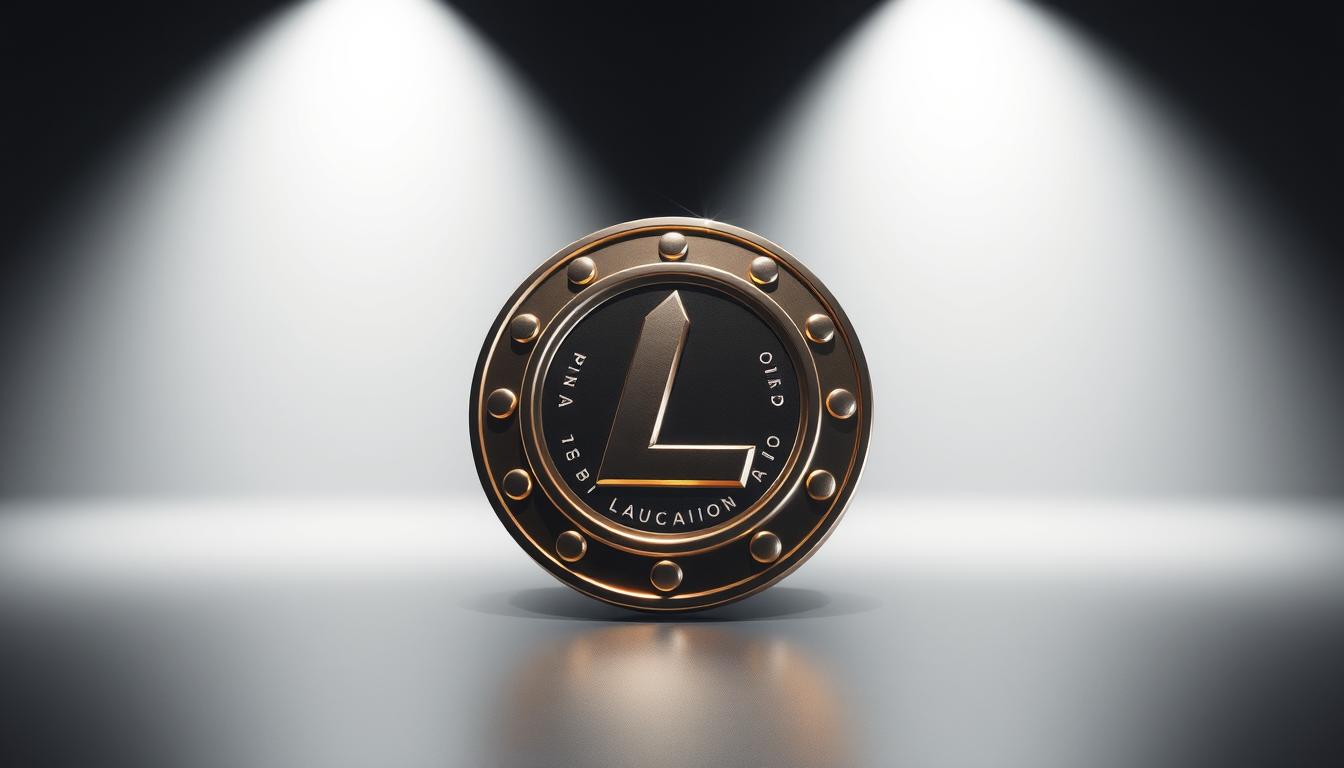The blockchain ecosystem is rapidly expanding, with over 4,000 active cryptocurrencies and numerous decentralized applications (dApps) operating across various networks. However, the lack of seamless interaction between these networks has hindered the industry’s growth.
A groundbreaking solution has emerged in the form of LayerZero technology, enabling cross-chain transactions and fostering a more interconnected blockchain environment. By facilitating the exchange of data and assets between different blockchain networks, LayerZero is revolutionizing the way we think about blockchain interoperability.
Key Takeaways
- LayerZero technology enables seamless cross-chain transactions.
- Enhances blockchain interoperability, fostering a more connected ecosystem.
- Supports the growth of decentralized applications across multiple networks.
- Improves the overall efficiency and scalability of blockchain transactions.
- Paves the way for a more integrated and accessible blockchain environment.
The Blockchain Interoperability Challenge
Blockchain’s full potential is hindered by a major obstacle: the inability of different blockchain systems to communicate effectively with one another. This limitation not only restricts the functionality of individual blockchain networks but also hampers the growth and adoption of blockchain technology as a whole.
The Fragmented Blockchain Landscape
The current blockchain ecosystem is characterized by a multitude of independent networks, each with its own architecture, consensus mechanism, and governance structure. This fragmented landscape results in a lack of cohesion and interoperability among blockchain networks, making it challenging for users and developers to interact with multiple chains seamlessly.
The proliferation of new blockchain platforms and the increasing complexity of existing ones have exacerbated the issue of fragmentation. As a result, the blockchain community is faced with the daunting task of enabling cross-chain communication to unlock the true potential of blockchain technology.
Current Limitations in Cross-Chain Communication
Existing solutions for cross-chain communication are often plagued by limitations such as:
- Insecurity: Many cross-chain solutions are vulnerable to security risks, compromising the integrity of transactions.
- Inefficiency: Current cross-chain communication protocols can be slow and cumbersome, leading to delays and increased costs.
- Lack of standardization: The absence of standardized protocols for cross-chain communication hinders the development of interoperable solutions.
Why Interoperability Matters for Web3
Interoperability is crucial for the realization of Web3, a vision of a decentralized internet where users have greater control over their data and identity. By enabling seamless interaction between different blockchain networks, interoperability solutions like LayerZero can:
- Enhance the overall user experience by providing a more cohesive and integrated blockchain ecosystem.
- Facilitate the development of more complex and sophisticated blockchain-based applications.
- Foster greater collaboration and innovation within the blockchain community.
As the blockchain landscape continues to evolve, the importance of interoperability cannot be overstated. Solutions that address the challenge of cross-chain communication will be pivotal in shaping the future of Web3 and unlocking the full potential of blockchain technology.
What is LayerZero (ZRO)?
LayerZero (ZRO) represents a groundbreaking approach to blockchain interoperability, addressing a critical need in the industry. As the blockchain ecosystem continues to expand, the necessity for seamless communication between different blockchain networks has become increasingly evident.
Origin and Development History
LayerZero was founded with the goal of creating a more interconnected blockchain ecosystem. The development history of LayerZero is marked by significant milestones, including strategic partnerships and technological advancements. The project’s commitment to open-source development has fostered a community-driven approach to its growth.
Core Vision and Mission
The core vision of LayerZero is to enable a trustless and efficient omnichain interoperability protocol. By doing so, it aims to facilitate the transfer of data and assets across various blockchain networks without relying on trusted third-party intermediaries. As stated by the LayerZero team, “Our mission is to provide a foundational layer for blockchain interoperability, empowering developers to build more robust and versatile applications.”
“The future of blockchain is omnichain, and LayerZero is at the forefront of this revolution.”
The Team Behind LayerZero
The team behind LayerZero comprises experienced professionals with a deep understanding of blockchain technology and its potential applications. Their expertise in cryptography, distributed systems, and software development has been instrumental in shaping the protocol’s architecture. The team’s dedication to advancing blockchain interoperability is evident in their continuous efforts to improve and expand the LayerZero ecosystem.
With its innovative approach and robust technology, LayerZero is poised to play a pivotal role in the evolution of the blockchain landscape. As the project continues to mature, it is likely to have a significant impact on the broader adoption of blockchain technology.
LayerZero’s Technical Architecture
At the heart of LayerZero’s success lies its robust technical architecture, designed to facilitate efficient cross-chain communication. This architecture is the backbone of the LayerZero protocol, enabling it to provide a seamless and secure interoperability solution for various blockchain networks. By leveraging cutting-edge technology, LayerZero has managed to address some of the most pressing challenges in the blockchain space.
Ultra Light Node (ULN) Technology
One of the key components of LayerZero’s technical architecture is its Ultra Light Node (ULN) technology. The ULN is designed to be lightweight and efficient, allowing it to facilitate cross-chain communication without the need for heavy node infrastructure. This results in faster and more cost-effective transactions across different blockchain networks.
The ULN technology achieves this by simplifying the validation process, ensuring that transactions are verified quickly and securely. This is crucial for applications that require high throughput and low latency, such as cross-chain DeFi platforms.
Oracle and Relayer Infrastructure
LayerZero’s architecture also includes a sophisticated oracle and relayer infrastructure. Oracles provide critical off-chain data to the protocol, while relayers facilitate the transmission of messages between different blockchain networks. This infrastructure is designed to be highly secure and reliable, ensuring that data is accurately transmitted and verified.
The combination of oracles and relayers enables LayerZero to support a wide range of cross-chain applications, from simple token transfers to complex smart contract interactions.
Zero-Trust Security Model
A cornerstone of LayerZero’s technical architecture is its zero-trust security model, which ensures that all transactions are secure and trustworthy. This model operates on the principle of verifying every transaction independently, without relying on any single entity or intermediary.
Verification Mechanisms
LayerZero employs advanced verification mechanisms to ensure the integrity of cross-chain transactions. These mechanisms involve complex algorithms that verify the authenticity of transactions, ensuring that they are legitimate and secure.
Security Protocols
In addition to its verification mechanisms, LayerZero has implemented robust security protocols to protect against potential threats. These protocols are designed to be highly resilient and adaptable, ensuring that the protocol remains secure even in the face of evolving security challenges.
By combining ULN technology, oracle and relayer infrastructure, and a zero-trust security model, LayerZero provides a highly secure and efficient solution for blockchain interoperability. This technical architecture positions LayerZero as a leader in the blockchain space, enabling a new generation of cross-chain applications and use cases.
How the LayerZero Protocol Works
At the heart of LayerZero’s technology is a sophisticated protocol that enables seamless interactions between different blockchain networks. This protocol is designed to address the critical challenge of blockchain interoperability, providing a robust foundation for a wide range of cross-chain applications.
Message Passing Mechanism
The LayerZero protocol utilizes a message passing mechanism that allows for the secure and efficient transfer of data between blockchain networks. This mechanism is fundamental to enabling cross-chain transactions and interactions, ensuring that data is accurately and reliably conveyed across different chains.
The message passing process involves several key components, including:
- Ultra Light Nodes (ULNs): These nodes play a crucial role in verifying the validity of cross-chain messages, ensuring the integrity of the data being transferred.
- Oracles and Relayers: These entities work together to facilitate the message passing process, with oracles providing critical data feeds and relayers responsible for transmitting messages between chains.
Cross-Chain Transactions Flow
The LayerZero protocol facilitates complex cross-chain transactions through a streamlined process that minimizes latency and maximizes security. Here’s an overview of how cross-chain transactions flow through the LayerZero network:
- A user initiates a cross-chain transaction, specifying the source and destination chains.
- The transaction is processed by the LayerZero protocol, which verifies the transaction details and ensures the necessary data is transmitted to the destination chain.
- The transaction is then executed on the destination chain, with the LayerZero protocol ensuring that the outcome is accurately reflected across both chains.
Gas Efficiency and Optimization
One of the key advantages of the LayerZero protocol is its ability to optimize gas efficiency, reducing the costs associated with cross-chain transactions. By leveraging its Ultra Light Node technology and optimizing the message passing mechanism, LayerZero minimizes the overhead required for cross-chain interactions, making it a cost-effective solution for users and developers.

In summary, the LayerZero protocol offers a powerful solution for blockchain interoperability, enabling secure, efficient, and cost-effective cross-chain interactions. Its innovative message passing mechanism, streamlined cross-chain transactions flow, and optimized gas efficiency make it an attractive choice for a wide range of applications in the blockchain ecosystem.
The ZRO Token Ecosystem
At the heart of LayerZero’s innovative interoperability solution lies the ZRO token, which plays a crucial role in the ecosystem’s functioning. The ZRO token is integral to the operation and governance of the LayerZero protocol.
Token Economics and Distribution
The token economics of ZRO are designed to promote a healthy and decentralized network. The distribution model ensures that the token is widely available, encouraging participation and investment in the ecosystem.
Utility and Governance Functions
The ZRO token serves multiple purposes within the LayerZero ecosystem. It is used for governance, allowing holders to vote on proposals that shape the future of the protocol. Additionally, the token facilitates various utility functions, such as paying for transaction fees and incentivizing node operators.
Staking and Rewards System
A key feature of the ZRO token ecosystem is its staking and rewards mechanism. Users can stake their ZRO tokens to participate in the validation process and earn rewards. This not only enhances the security of the network but also provides an incentive for long-term holding and participation.
By integrating a robust staking and rewards system, the LayerZero protocol encourages active engagement with the ZRO token, fostering a vibrant and committed community around the zro token and its ecosystem.
Key Benefits of LayerZero (ZRO)
By leveraging LayerZero (ZRO), the blockchain ecosystem becomes more interconnected and efficient. This innovative protocol offers a range of benefits that address some of the most pressing challenges in blockchain interoperability.
Enhanced Security Across Chains
LayerZero’s Ultra Light Node (ULN) technology and zero-trust security model provide enhanced security across different blockchain networks. This ensures that cross-chain transactions are executed with the highest level of security, minimizing the risk of fraud and cyber attacks.
Reduced Transaction Costs
One of the significant advantages of LayerZero is its ability to reduce transaction costs. By optimizing gas efficiency and minimizing the need for intermediaries, LayerZero makes cross-chain transactions more cost-effective for users.
| Feature | LayerZero | Traditional Solutions |
|---|---|---|
| Transaction Costs | Lower | Higher |
| Security | Enhanced | Varies |
| Scalability | High | Limited |
Improved User Experience
LayerZero’s innovative technology also leads to an improved user experience. By simplifying cross-chain interactions and reducing the complexity associated with multi-chain transactions, LayerZero makes it easier for users to engage with various blockchain applications.
Scalability Advantages
The protocol’s architecture is designed to provide scalability advantages, allowing it to handle a high volume of cross-chain transactions without compromising performance. This scalability is crucial for the growth and adoption of blockchain technology.
In conclusion, LayerZero (ZRO) offers a range of key benefits that make it an attractive solution for blockchain interoperability. Its enhanced security, reduced transaction costs, improved user experience, and scalability advantages position it as a significant player in the evolving blockchain landscape.
Applications and Use Cases
The versatility of LayerZero is evident in its wide range of use cases across different sectors. By enabling seamless interoperability between blockchain networks, LayerZero is paving the way for innovative applications that were previously hindered by the limitations of isolated blockchain ecosystems.
Cross-Chain DeFi Integration
One of the most significant applications of LayerZero is in the realm of Decentralized Finance (DeFi). By facilitating cross-chain transactions, LayerZero enables users to access a broader range of financial services and assets across multiple blockchain networks. This integration enhances liquidity, reduces transaction costs, and opens up new opportunities for yield farming and other DeFi activities.
Cross-chain DeFi is revolutionizing the financial landscape by providing users with more flexibility and access to a wider array of financial instruments.
NFT Interoperability Solutions
LayerZero also plays a crucial role in enhancing NFT interoperability. By allowing NFTs to be transferred and utilized across different blockchain platforms, LayerZero fosters a more vibrant and interconnected NFT ecosystem. This interoperability is essential for the growth and adoption of NFTs, as it enables creators and collectors to engage with a broader audience and unlock new revenue streams.
Gaming and Metaverse Applications
The gaming and metaverse sectors are also benefiting significantly from LayerZero’s technology. By enabling the seamless transfer of assets and data between different blockchain networks, LayerZero enhances the gaming experience and allows for more complex and interconnected virtual worlds. This capability is crucial for the development of immersive and engaging metaverse experiences.
Enterprise Blockchain Solutions
LayerZero’s technology is not limited to consumer-facing applications; it also offers significant benefits for enterprise blockchain solutions. By providing a secure and efficient means of interoperability, LayerZero enables businesses to leverage the strengths of multiple blockchain networks, enhancing their operational flexibility and reducing costs.
As the blockchain landscape continues to evolve, LayerZero is well-positioned to support the development of innovative enterprise solutions that capitalize on the benefits of interoperability.
Challenges and Future Roadmap
LayerZero’s journey is not without its hurdles; understanding these challenges is key to grasping its future potential. As the blockchain ecosystem continues to evolve, LayerZero must adapt to emerging trends and overcome existing limitations.
Current Limitations and Challenges
Despite its innovative approach to blockchain interoperability, LayerZero faces several challenges. One of the primary concerns is the security vulnerability inherent in cross-chain transactions. Ensuring the integrity and security of data transferred between different blockchain networks is paramount.
Another challenge is the complexity of implementation for developers. While LayerZero aims to simplify cross-chain interactions, integrating its protocol into existing applications can still be a complex task, requiring significant development resources.
Upcoming Protocol Upgrades
To address these challenges, the LayerZero team is working on several protocol upgrades. These include enhancements to the Ultra Light Node (ULN) technology to improve security and efficiency. Additionally, there are plans to simplify the integration process for developers through more comprehensive toolkits and documentation.
“The future of blockchain interoperability depends on our ability to innovate and address the existing challenges. We’re committed to pushing the boundaries of what’s possible with LayerZero.”
Expansion Plans and New Features
LayerZero’s roadmap includes expanding its support to more blockchain networks, enhancing its cross-chain DeFi applications, and exploring new use cases such as NFT interoperability. The team is also focusing on improving the user experience by reducing transaction costs and latency.
| Feature | Description | Status |
|---|---|---|
| Enhanced ULN Technology | Improved security and efficiency for cross-chain transactions | In Development |
| Simplified Developer Toolkit | Easier integration of LayerZero protocol into existing applications | Planned |
| Expanded Blockchain Support | Increased compatibility with various blockchain networks | In Progress |
As LayerZero continues to evolve, its ability to overcome current limitations and adapt to the changing blockchain landscape will be crucial. With a clear roadmap and commitment to innovation, LayerZero is poised to play a significant role in shaping the future of blockchain interoperability.

Conclusion: The Future of LayerZero in the Blockchain Ecosystem
LayerZero (ZRO) is revolutionizing the blockchain landscape by providing a robust interoperability solution. Its innovative layerzero technology enables seamless communication between different blockchain networks, fostering a more interconnected and efficient blockchain ecosystem.
As the blockchain industry continues to evolve, LayerZero is poised to play a crucial role in shaping the future of Web3. With its ultra-light node technology, oracle and relayer infrastructure, and zero-trust security model, LayerZero offers a scalable, secure, and user-friendly solution for cross-chain transactions.
The ZRO token ecosystem is designed to facilitate governance, staking, and rewards, further enhancing the protocol’s functionality. As LayerZero continues to expand its capabilities and address current limitations, it is likely to have a profound impact on the blockchain ecosystem, enabling new use cases and applications across various industries.
With its strong technical foundation and growing adoption, LayerZero is well-positioned to drive the future of blockchain interoperability, empowering developers, enterprises, and users to build and interact with a more connected and decentralized world.





